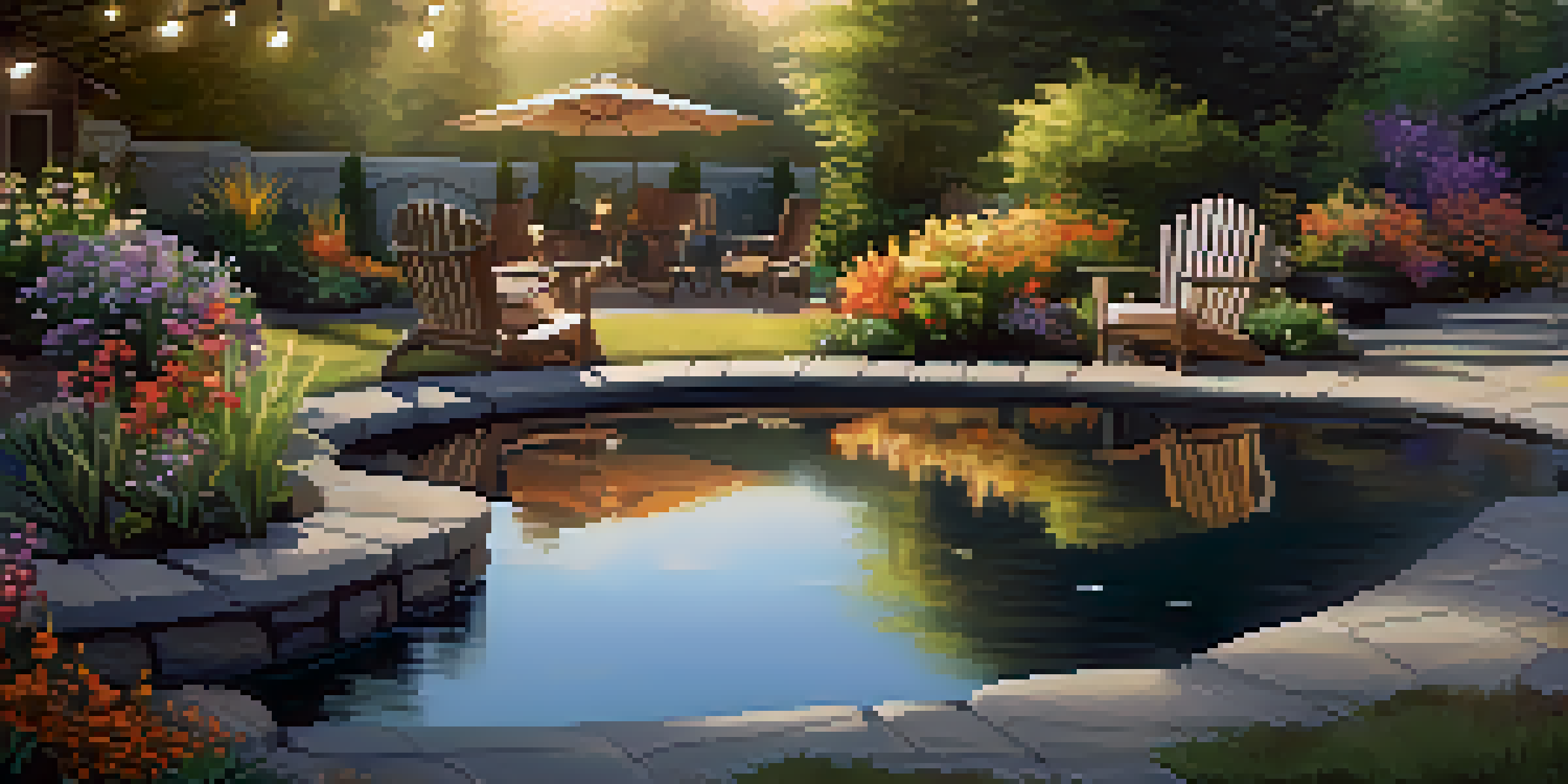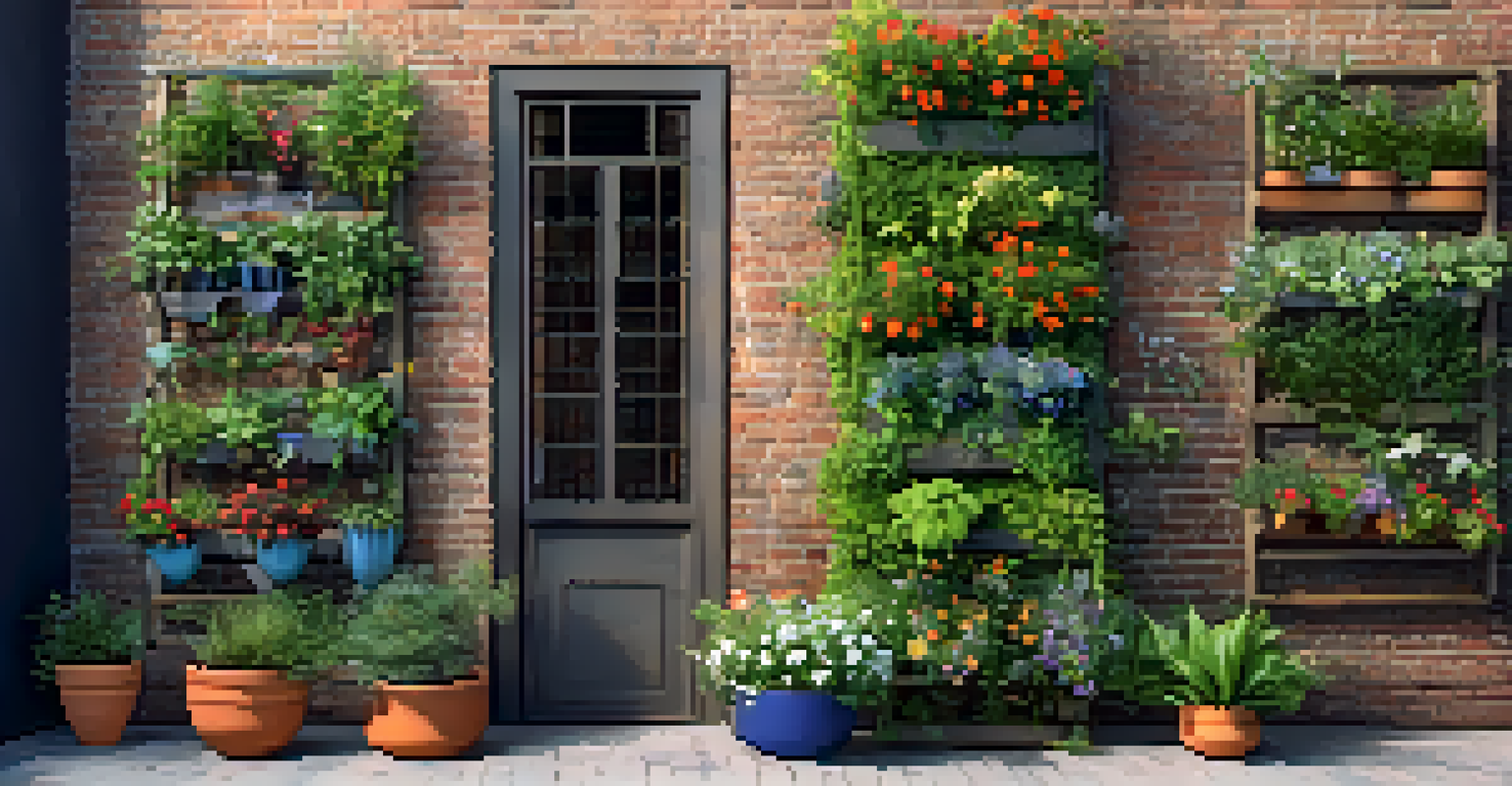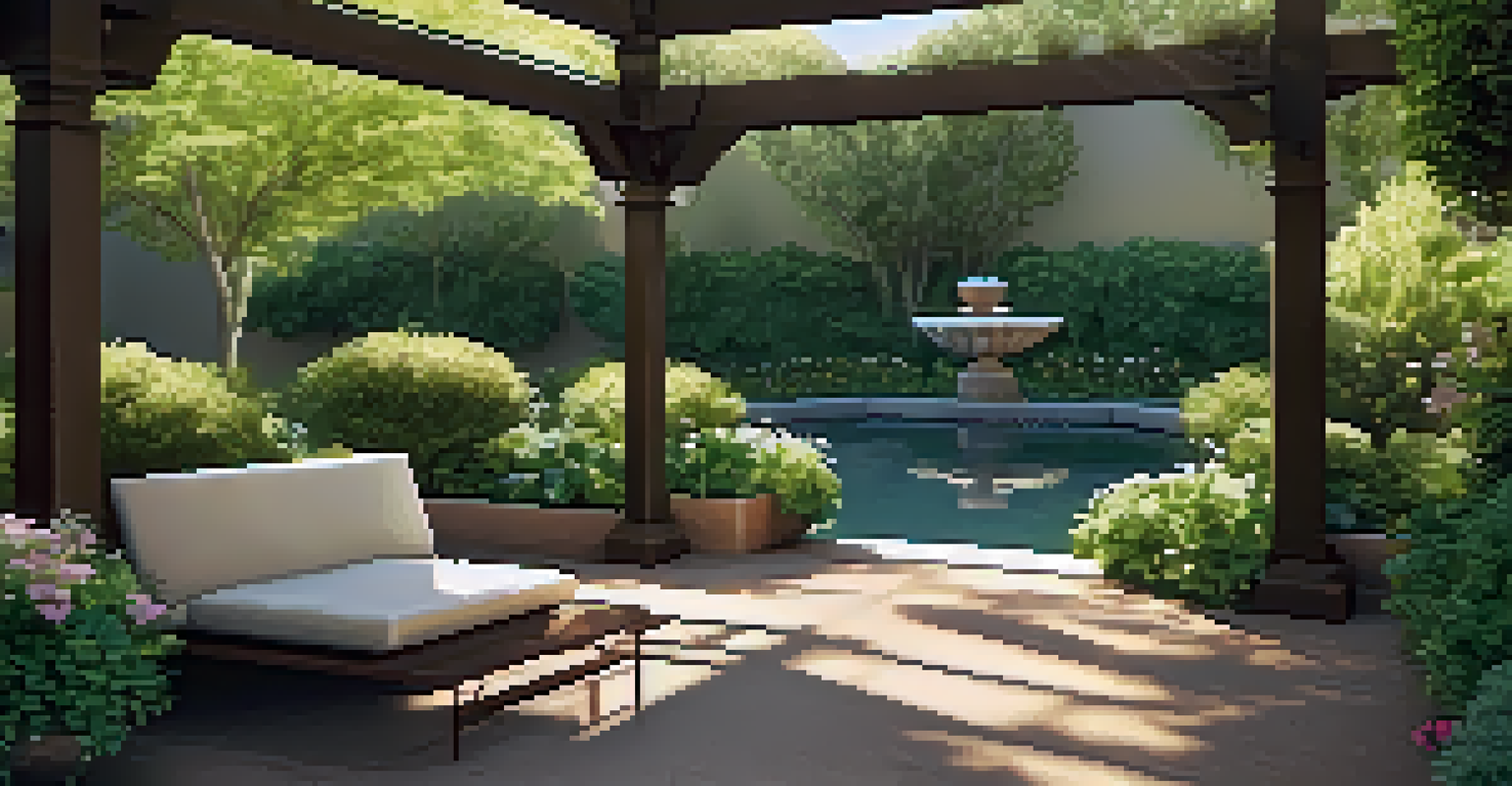Designing Outdoor Spaces for Nature Lovers

Embracing Natural Elements in Design
To truly appeal to nature lovers, it's essential to incorporate natural elements into outdoor designs. Think about using materials like wood, stone, and native plants that harmonize with the existing landscape. This connection to nature not only enhances the aesthetic but also promotes biodiversity, creating a thriving ecosystem right in your backyard.
In every walk with nature one receives far more than he seeks.
Incorporating features like natural ponds or rock formations can add a unique touch to your outdoor space. For example, a small pond can attract local wildlife, offering a serene spot to observe frogs, dragonflies, and birds. This creates a dynamic environment where the landscape evolves, keeping nature lovers engaged and inspired.
Furthermore, consider the layout of your outdoor space. Using organic shapes rather than rigid lines can mimic the natural flow of the surrounding environment, making the space feel more inviting. By creating a seamless transition between your design and nature, you foster a deeper appreciation for the beauty that surrounds us.
Creating Cozy Gathering Spots
Outdoor spaces should invite people to gather and connect with each other and nature. Design cozy seating areas using comfortable chairs, benches, or even hammocks to encourage relaxation and conversation. Imagine a space where friends can share stories around a fire pit while enjoying the sounds of chirping crickets and rustling leaves.

Incorporating elements like fairy lights or lanterns can enhance the ambiance once the sun sets. These subtle touches create a warm, inviting atmosphere that draws people outside, making them want to linger longer. The right lighting can transform your outdoor space into a magical retreat, perfect for evening gatherings.
Embrace Nature in Your Design
Incorporating natural materials and features creates a harmonious outdoor space that enhances biodiversity.
Consider also the placement of your seating areas. Position them to face beautiful views, such as a garden or a sunset, ensuring that nature remains the focal point. This encourages people to take in their surroundings, fostering a deeper connection with the environment and each other.
Incorporating Functional Garden Spaces
For nature lovers, a garden is more than just a collection of plants; it's a sanctuary. Designing functional garden spaces that allow for planting, harvesting, and enjoying fresh produce can enhance outdoor experiences. Raised garden beds, for instance, provide easy access for gardening while adding structure to your landscape.
Nature does not hurry, yet everything is accomplished.
Adding pathways through your garden can guide visitors on a journey, inviting them to explore various plants and flowers. Consider using natural materials like gravel or mulch for pathways that blend seamlessly with the garden's aesthetic. This not only makes the garden accessible but also encourages exploration and interaction with nature.
Moreover, incorporating edible plants and herbs can turn your garden into a culinary adventure. Imagine picking fresh basil for your pasta or harvesting tomatoes for a summer salad. This not only promotes sustainability but also adds an element of joy and satisfaction to outdoor spaces.
Integrating Wildlife Habitats
Creating habitats for local wildlife can be a rewarding addition to outdoor spaces. Consider adding birdhouses, bee hotels, or bat boxes to attract beneficial creatures. These small alterations can have a significant impact, inviting nature lovers to observe and engage with wildlife right in their own gardens.
Planting native species is another simple way to support local ecosystems. Native plants are adapted to the local environment and provide essential food and shelter for various wildlife. By choosing these plants, you're not just beautifying your space; you're actively contributing to the health of the environment.
Create Cozy Gathering Spots
Designing inviting seating areas encourages relaxation and connection among friends and nature.
Incorporating water features, like bird baths or small ponds, can also attract a range of wildlife. These features provide hydration and a place for birds to bathe, making your garden a lively spot. Nature lovers will appreciate the diversity of life that thrives in a thoughtfully designed outdoor space.
Designing with Sustainability in Mind
Sustainability is a key consideration for nature lovers when designing outdoor spaces. Utilizing eco-friendly materials and practices not only reduces environmental impact but also appeals to those passionate about conservation. For instance, consider using recycled materials for paths or furniture to create a sustainable yet stylish outdoor setting.
Rain gardens are another fantastic way to incorporate sustainability into your design. These gardens capture rainwater, allowing it to filter back into the ground, reducing runoff and promoting groundwater replenishment. Plus, they can be beautifully designed with native plants that thrive in wet conditions, adding both function and beauty to your space.
Lastly, incorporating compost bins encourages recycling organic waste and supports healthy soil. This not only benefits your plants but also aligns with the values of many nature lovers who prioritize sustainable practices. Creating a garden that reflects these principles can inspire others to adopt similar habits, fostering a community focused on environmental stewardship.
Utilizing Vertical Space Creatively
In outdoor spaces where horizontal space is limited, vertical gardening offers a creative solution. Using trellises, wall planters, or vertical racks can maximize space while adding visual interest. This approach not only allows for the cultivation of plants but also transforms walls into living artworks that capture attention and spark curiosity.
Consider incorporating climbing plants like ivy or flowering vines that can thrive on vertical structures. These plants not only beautify your space but also provide habitats for pollinators, creating a more vibrant ecosystem. Imagine a wall bursting with colorful blooms or lush greenery that invites nature into your outdoor area.
Promote Sustainability in Gardens
Utilizing eco-friendly practices and native plants supports local ecosystems and fosters environmental stewardship.
Vertical gardening also opens the door to growing herbs and vegetables in smaller spaces. Imagine having fresh herbs at your fingertips while cooking, all from a compact vertical garden. This not only enhances accessibility but also encourages a hands-on approach to gardening, appealing to nature lovers who enjoy participating in the growth process.
Incorporating Relaxation and Wellness Features
Outdoor spaces can serve as retreats for relaxation and wellness, which is especially appealing to nature lovers. Consider adding features like meditation corners, yoga decks, or quiet nooks surrounded by plants. These areas can provide a sanctuary to unwind and connect with nature, promoting mental well-being.
Water features, like fountains or gentle streams, can enhance the soothing atmosphere. The sound of flowing water creates a calming backdrop, encouraging mindfulness and reflection. Picture yourself meditating by a small waterfall, the sound of water washing away stress and rejuvenating your spirit.

Moreover, integrating comfortable seating with soft cushions encourages lingering in these relaxing spaces. Add shade with pergolas or canopies to create a cozy atmosphere, perfect for reading or enjoying a cup of tea. By designing outdoor areas focused on relaxation and wellness, you cultivate a deeper appreciation for the natural world around us.